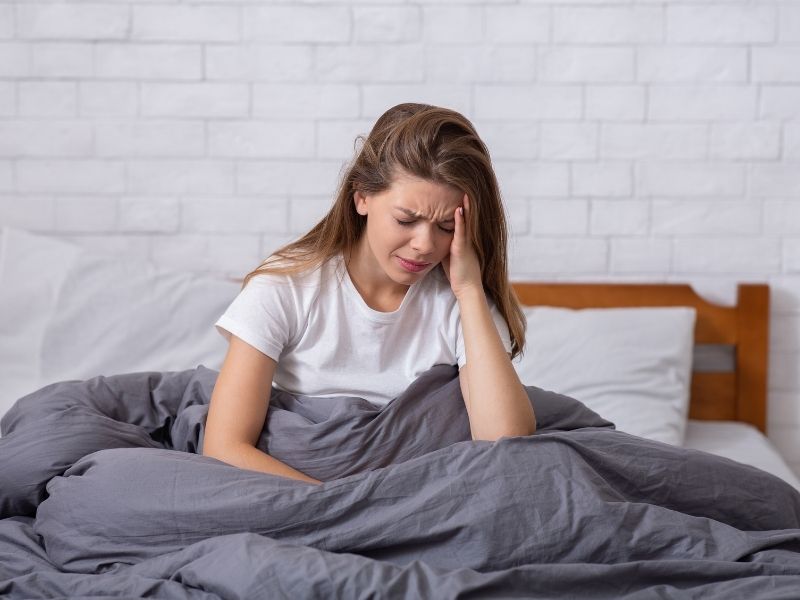Whether or not women can orgasm is a subject of great curiosity and supported by research. Since women's orgasm is not as simple as men's, many women may experience problems such as sexual reluctance, thinking that they are unsuccessful in this regard. Studies have shown that one-third of women have never had an orgasm in their lives. Not being able to orgasm is actually an important issue for a woman's sexual health. There are many women who complain of not being able to orgasm but cannot consult a specialist due to reasons such as being embarrassed about the subject or fearing social norms.
What is Orgasm?
Orgasm is a point of satisfaction that gives pleasure to the person as a result of prolonged sexual stimulation. Orgasm is seen as a result of pleasure reached through masturbation or sexual intercourse. It is known that women rarely experience orgasm during sleep during periods when hormones are intense. Orgasm, which usually lasts between 10-20 seconds, can last longer due to some medications or the type of condom used. During orgasm, symptoms such as rapid heartbeat, facial flushing, contraction, and rapid breathing occur.
How Do Women Orgasm?
Female orgasm is more comprehensive than the orgasm seen in men. There are two ways for women to achieve orgasm. Orgasm occurs in two ways: vaginal and clitoral. This orgasm can be achieved through masturbation or sexual intercourse. Stimulation of the vaginal wall or stimulation of the clitoris causes orgasm.
Since a physiological ejaculation is not observed in women as in men, it can be thought that orgasm does not occur. However, how the sexual intercourse progresses and the woman's current physical and mental condition affect the intensity of orgasm.
Women can understand that they have an orgasm as a result of the symptoms they experience. Orgasm is known as the peak point of pleasure from situations such as sexual intercourse or masturbation. Therefore, the person experiences long-term pleasure before having an orgasm. During this process, involuntary contractions are seen in the vagina, uterus and many parts of the body. Fluids that help the vagina become more lubricated at the time of orgasm can be seen.
Why Does Anorgasmia Happen?
Anorgasmia is the inability to have an orgasm in women or men. These problems can be seen frequently in women due to physical or psychological reasons. In order for the inability to have an orgasm to be called a problem or disease, it must last at least six months. Anorgasmia in women can be seen due to many neurological, psychological and cardiological problems. It has been determined that women who experience anorgasmia are mostly older. This can also be accompanied by women who have been married for a very long time.
- Reasons such as insecurity towards the partner,
- Woman's level of education,
- Lack of sexual education,
- Sexuality being taboo and not being learned,
- Smoking,
- Pelvic muscle weakness, nerve damage,
- Reduced blood flow in the genital area due to vascular occlusion can cause anorgasmia.


What Causes Women to Not Have an Orgasm?
Women's inability to have an orgasm can lead to psychological negativities. A woman's inability to have an orgasm can lead to anxiety, feeling bad about herself, and even depression. In fact, many women who experience this problem feel pleasure during sexual intercourse or masturbation, but due to the short duration of pleasure due to many reasons, they cannot reach orgasm. As a result, the person begins to doubt their sexual performance and experience sexual reluctance, psychological problems, and negative situations with their partner.
Since women's orgasm is more complicated than men's, it may not be possible to have an orgasm in every sexual situation. Focusing on the feeling of pleasure without expecting an orgasm can make it easier to have an orgasm.
Types of Anorgasmia
The types of anorgasmia are determined by the degree of not having an orgasm. Primary anorgasmia is the situation where the person has had an orgasm before but is later seen as a problem. Random anorgasmia is a condition in which a person sometimes has an orgasm and sometimes does not.
Clitoral Anorgasmia: The clitoris, located above the urinary meatus, contains nerve endings and is known to be the area where sexual arousal is most common. The condition of not having an orgasm as a result of clitoral stimulation is called clitoral anorgasmia.
Vaginal Anorgasmia: The condition in which an orgasm is experienced with clitoris stimulation but not vaginal stimulation. It is also known as coital orgasm.
Treatment of Orgasm
There are many different methods for the treatment of orgasm. In most cases, it is important to apply several of these procedures together to increase the success of the treatment. First, a gynecological examination is performed and it is determined whether there is a physical problem. Genital area procedures are also included in the treatment of anorgasmia.
G-shot procedure, G-spot enlargement, is a filler injection into the point called the G-spot in the vagina where sexual pleasure is felt (nowadays it is described as an erogenous network, area, not a point). O-Shot, on the other hand, is injections made to the pleasure-enhancing areas in the vagina and around the clitoris.
Laser or surgical vaginal tightening, renewal (rejuvenation) procedures can also be applied to facilitate orgasm.
In the treatment of reluctance or orgasm problems due to psychological reasons, sexual therapies, acupuncture treatments, hypnotherapy, drug treatments are tried. Our preference is combined treatments, as we do for many patients.
How to solve the problem of not being able to ejaculate in women?
Treatment of not being able to ejaculate in women is carried out with many methods. Kegel exercises, vaginal procedures, psychological therapy treatments are the solutions to this problem.
How to get rid of anorgasmia?
Women who have problems with not having an orgasm should consult a gynecologist for anorgasmia treatment. Treatment should be planned according to the patient's orgasm problem history.
I can't have an orgasm, why?
There are many reasons for not having an orgasm. Not being psychologically ready for sexuality, having a physical problem, having incomplete or incorrect information about sexuality, etc. make it difficult to have an orgasm.




